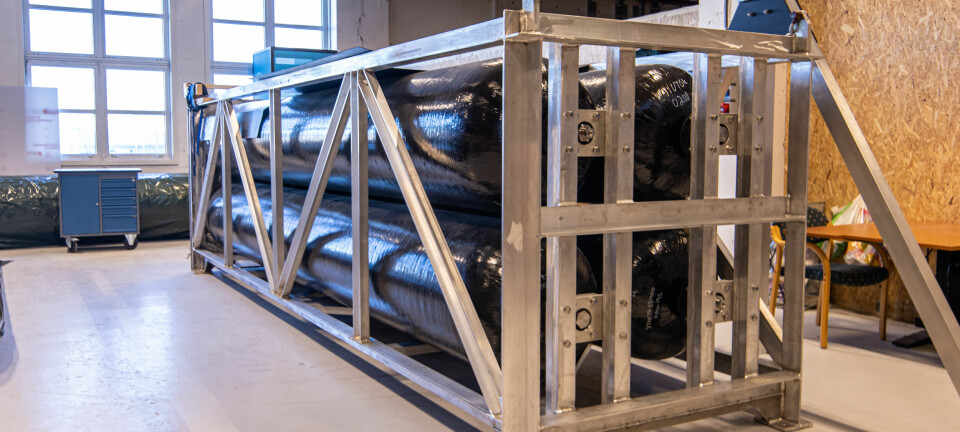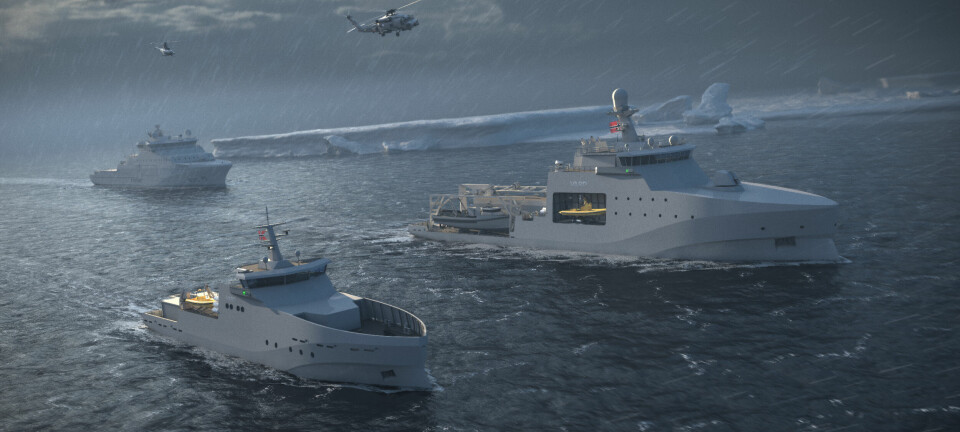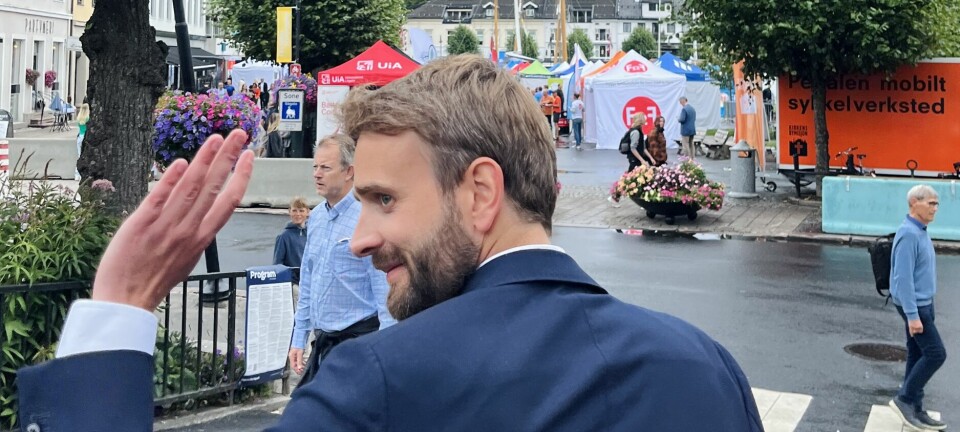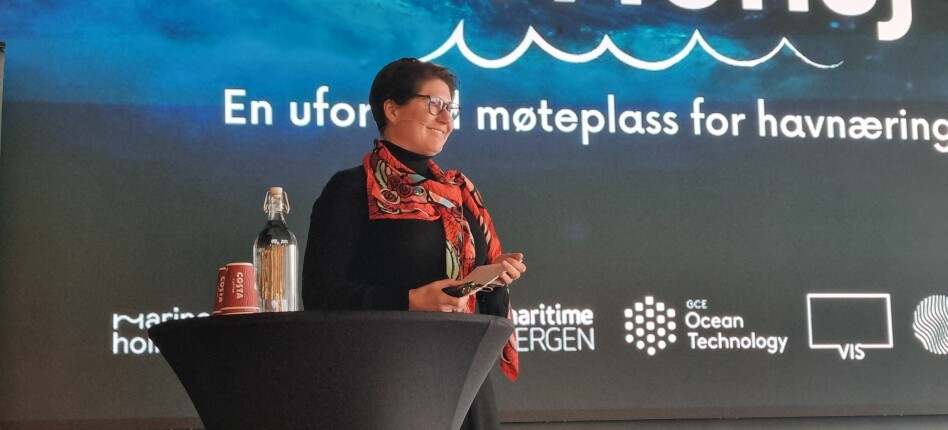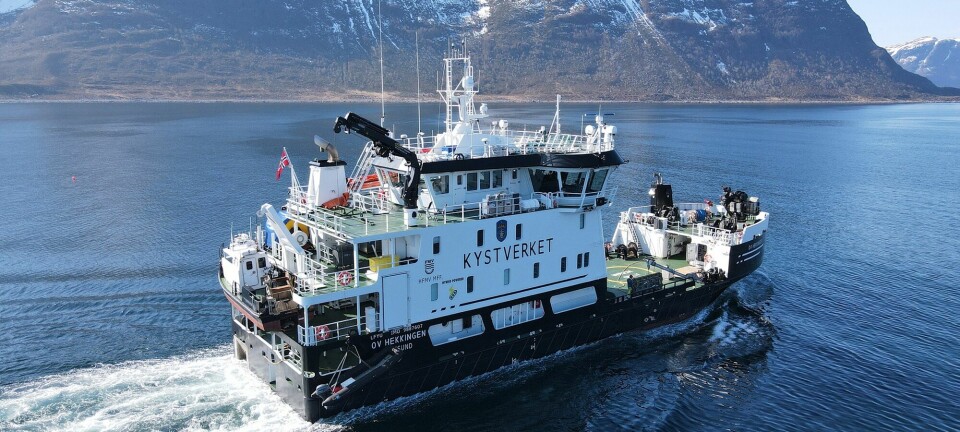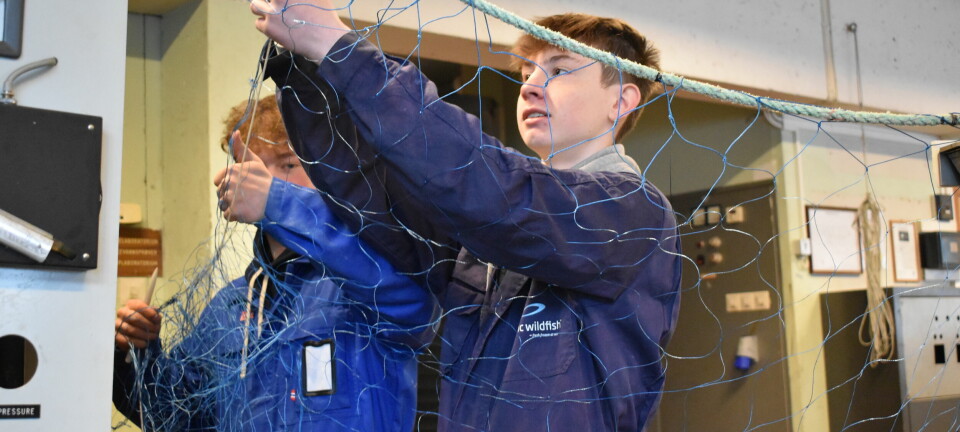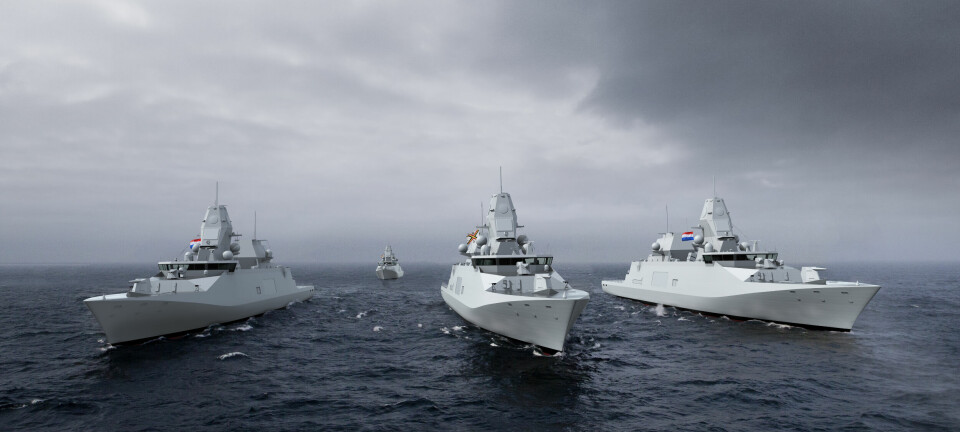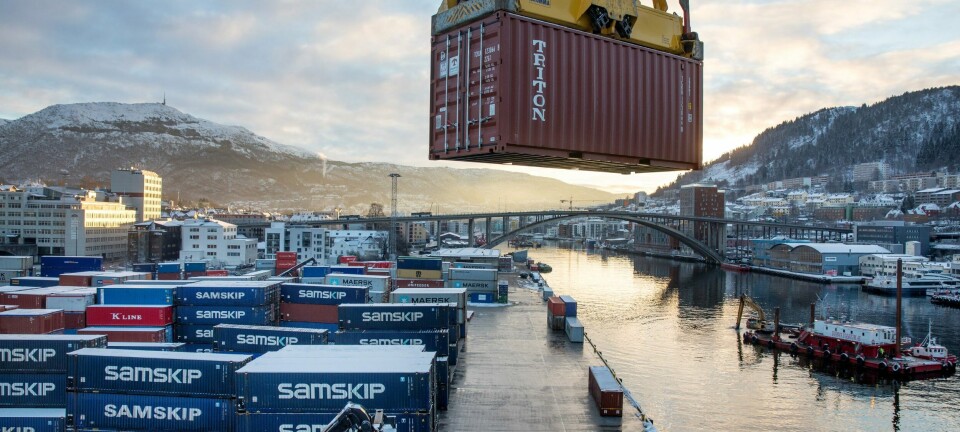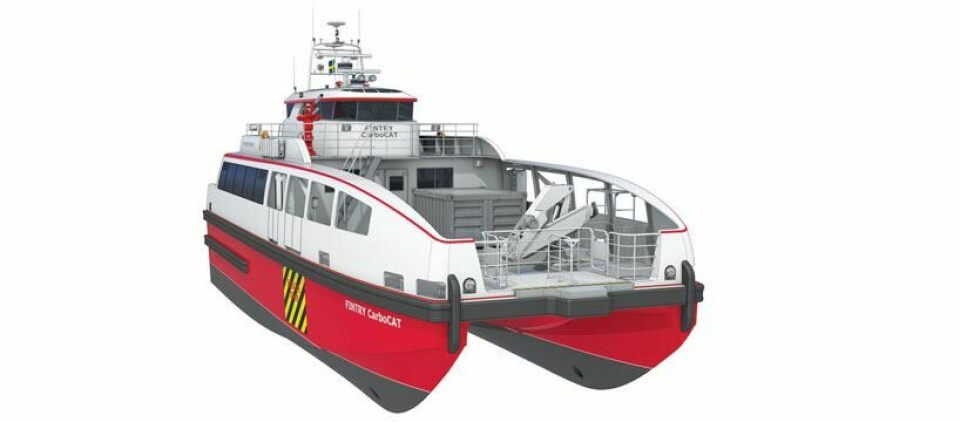
Designed for offshore wind park service
Fintry Marine placed an order for a new working boat (CarboCAT TM 23) from Kockums AB with delivery during late summer 2010. Both the hull and the superstructure of the catamaran are made in Carbon Fibre Reinforced Panel (CFRP).
Denne artikkelen er tre år eller eldre.
The boat (23m length overall, 10,6m beam overall) is designed for offshore wind park service, allowing transport of both material (up to 8 tons) and technicians (up to 24), with a service speed of 25 knots. The boat is consistently built according to DNV ✠1 A1 HSLC R2 CREW notation.
The machinery consist of two MTU diesel engines (8V 2000, 720 kW each) coupled to two Hamilton water-jet (HM571) allowing – in combination with bow thrusters – easy and safe manoeuvres during docking operations with the wind turbine tower.
Safety – a key word
The hull design of the catamaran gives a high sea-keeping capability allowing progress at service speed (25 knots) with 1.5 significant wave, and at reduced speed (approx 15 knots) with a 2.6m significant wave.
The docking procedure is the most critical moment of the service operation. The safety during the docking is mainly dependent on the following parameters: vessel size, docking area arrangement, manoeuvrability, and visibility from the bridge.
The 23 m overall length of the CarboCAT TM 23 is chosen to match the most common wave conditions in wind farm areas. Moreover a longer vessel results in smaller rake angels during docking and thereby less risk of loosing the grip. The extra length compared to most existing service vessels will improve safety and availability.
The large docking area allows personnel to dock in a rapid succession. The CFRP construction results in a rigid, durable bow structure, which is clear advantage when comparing to aluminum structures.
A good manoeuvrability at low speed is obtained by water-jet propulsion and two heavy duty bow thrusters. The bridge is positioned on top of the superstructure, which results in excellent visibility.
CRFP
The choice of CRFP is directly related to its high ratio rigidity/weight, and its good aging properties. In comparison with a similar hull in aluminum the weight reduction is at least 30%. For equivalent performances (speed and pay load capacity) a lower power delivered by the propulsion diesel engine is then required. This results in a lower fuel consumption (up to 20%), which means both lower service cost and lower CO2 emission.
The CFRP structure allows a more rigid bow structure compared to aluminum. Moreover by aging, mechanical properties of the CFRP material are constant, contrarily to aluminum highly affected by fatigue.
Those two properties lead to a lower maintenance costs (less repair needed, in combination with higher availability), and to a longer service life. It can be summarized by a lower investment cost per year.
Other applications and product line
The present boat is built on a platform, which allows an overall length from 18m to 23m. It can be outfitted with several motor and propulsion solutions depending on the customer needs and requirements. Passenger boat, ambulance- or rescue boat, pilot boat are some possible applications.
Within the same product line CarboCAT there is also a larger platform with an overall length from 38m to 43m mainly dedicated to fast passenger ferries.
❊
Som nevnt i SKIPSREVYEN nr. 6/2009 er det inngått en samarbeidsavtale mellom Kockums og Brødrene Aa for markedsføring, uvikling og produksjon av passasjerfartøyer i kullfiber/sandwich struktur.

